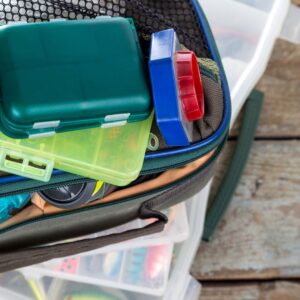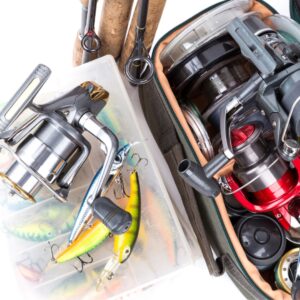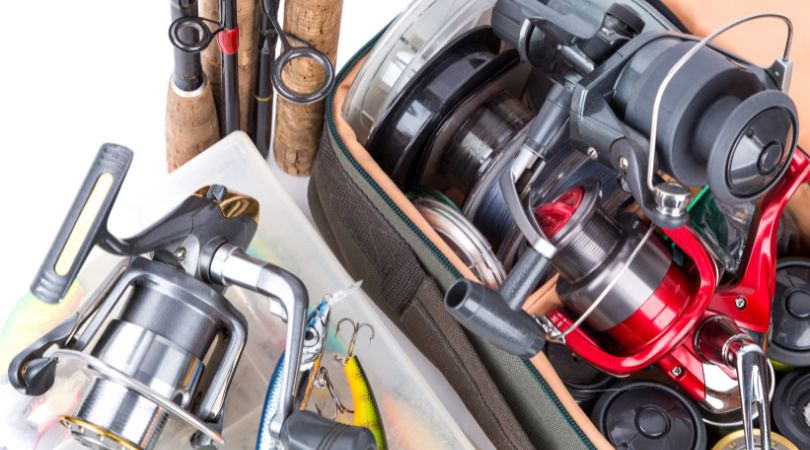Fishing enthusiasts understand the importance of a well-organized tackle bag. If you’re heading out for a weekend getaway or a day on the water, it is essential that you are prepared while having the best fishing backpack properly packed can make a world of difference. But how exactly do you pack a tackle bag to ensure you have everything you need at your fingertips? Here are some essential tips to help you pack your tackle bag efficiently.
1) Prioritize the Essentials:
 Start by gathering all your fishing gear and evaluating what you need for your specific fishing trip. It’s essential to prioritize the essentials and pack them first. These may include fishing reels, extra fishing lines, hooks, sinkers, and various bait options. Organize these items in the main compartment of your tackle bag to ensure easy access when needed.
Start by gathering all your fishing gear and evaluating what you need for your specific fishing trip. It’s essential to prioritize the essentials and pack them first. These may include fishing reels, extra fishing lines, hooks, sinkers, and various bait options. Organize these items in the main compartment of your tackle bag to ensure easy access when needed.
2) Consider the Weather and Fishing Conditions:
The fishing conditions and weather can significantly impact your tackle bag packing strategy. If you’re planning to fish in a specific type of water, such as freshwater or saltwater, make sure to pack the appropriate lures, hooks, and bait for that environment. Similarly, consider the weather forecast and pack items like sunscreen, insect repellent, a hat, and extra layers of clothing accordingly.
3) Utilize Compartments and Dividers:
 Most tackle bags come with multiple compartments and dividers, which are designed to help you stay organized. Take advantage of these features by using them to separate different types of fishing gear. For example, dedicate one compartment to soft plastic baits, another too hard baits, and a separate section for terminal tackle like hooks, swivels, and weights. This level of organization will save you valuable time when you need to find a specific item.
Most tackle bags come with multiple compartments and dividers, which are designed to help you stay organized. Take advantage of these features by using them to separate different types of fishing gear. For example, dedicate one compartment to soft plastic baits, another too hard baits, and a separate section for terminal tackle like hooks, swivels, and weights. This level of organization will save you valuable time when you need to find a specific item.
4) Arrange Based on Accessibility:
While packing your tackle bag, think about the items you’ll need to access frequently and those you’ll only require occasionally. Place the frequently used items, such as your pliers, line cutters, and bait, in easily accessible pockets or compartments. This way, you won’t have to rummage through your bag every time you need them. Reserve the less frequently used items for the deeper pockets or compartments.
5) Don’t Forget the Extras:
In addition to your fishing gear, there are a few extra items that can come in handy during your fishing adventures. These include a first aid kit, a flashlight, a multi-tool, a small towel, and a fishing license. Consider allocating a specific pocket or compartment for these extras, ensuring they’re readily available when needed.
6) Keep It Lightweight:
Lastly, remember that your tackle bag will likely become heavier as you add more items. To prevent unnecessary strain on your back and shoulders, try to keep it as lightweight as possible. Avoid carrying excessive gear that you won’t use on your fishing trip. Regularly reassess your tackle bag’s contents and remove any items that you rarely use or duplicates of the same gear.
By following these tips, you can efficiently pack your tackle bag and be well-prepared for your next fishing expedition. An organized tackle bag not only saves you time and frustration but also allows you to fully enjoy your fishing experience. Remember to adjust your packing strategy based on the specific fishing trip and conditions, and don’t forget to regularly restock your tackle bag with fresh supplies.

